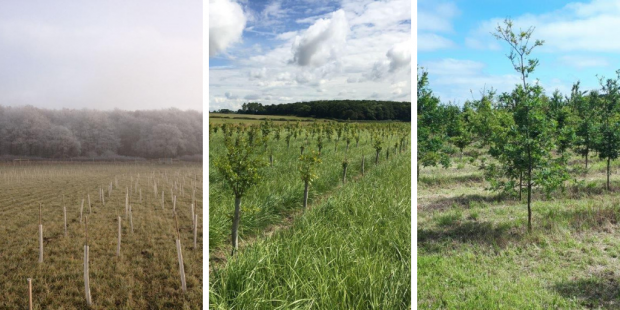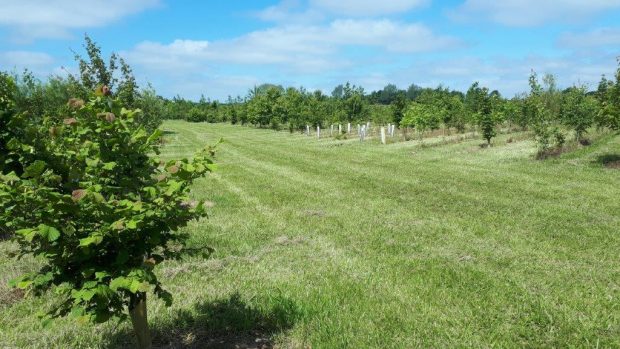
Trees and Carbon
As greenhouse gases continue to affect our climate we need to consider what tools we can use to help compensate for our emissions that are responsible for this change.
The benefits of woodland creation are well known including flood prevention, enhancing biodiversity and the many health benefits they provide, but we mustn’t overlook their ability to store carbon. They soak up carbon dioxide, removing it from our atmosphere and slow the changes to our climate.
We can measure the amount of carbon a tree will store and use it to compensate for equivalent emissions from sources such as cars or homes. In March 2019 it was calculated that the 187 projects validated to the Woodland Carbon Code have created over 8,200ha of woodland, predicted to sequester 3.4 million tonnes of carbon dioxide.
So what is the Woodland Carbon Code?
The Woodland Carbon Code, launched in 2011, is the UK’s government backed standard for woodland carbon projects, and provides the mechanism for landowners to attract carbon funding to support woodland creation projects on their land. It is based on robust carbon prediction tools and monitoring protocols developed by Forest Research, projects are independently verified, and carbon units held in a credible registry .
Creating woodland with the Woodland Carbon Code allows you to sell the carbon units from your woodland. As buyers of this carbon want to be assured of the amount of carbon sequestration that has been, or will be, achieved, the Woodland Carbon Code provides the standard and checks for measuring it robustly.
In order to sign up to the Woodland Carbon Code and sell carbon from your woodland creation project you need to make sure you are eligible, register within two years of the planting being started and validate your project within three years of registering. You will also be required to check your project after five then every ten years, to monitor progress and have the carbon sequestered to date independently verified.

Who buys carbon units?
Companies who are looking to compensate for their emissions would look to buy Woodland Carbon Units. Greenhouse gas reporting is mandatory for all large UK companies (around 12,000) and they have the option to buy verified Woodland Carbon Units to compensate for unavoidable emissions such as from their fleet vehicles.
Buyers of carbon are also attracted to the wider ecosystem and community benefits that are provided by projects, and many have been attracted to the ‘story’ that comes with the project and why the woodland is being created.
As a landowner you can offer your units for sale via the registry or provide a case study to advertise your project to potential buyers on the Woodland Carbon Code website. It is worth asking businesses locally if they are interested in buying them, as many like to use a woodland close to their offices that they can visit and reap other benefits from.
You can also use a project developer who can help you put your project through the Woodland Carbon Code. They may take on responsibility for the validating, monitoring and verifying your project or help you find a buyer.
Why sign up now?
Over the last year there have been changes, actual and proposed, in Government policy which signal a stronger demand for woodland carbon in the future. The Committee on Climate Change’s ‘net-zero’ report and the ‘climate emergency’ announced by the Westminster Government and many local authorities has led to an up-swell of interest in tree planting to offset carbon emissions.
Participation in the Woodland Carbon Code is a prerequisite to participation in the government’s new Woodland Carbon Guarantee. The Woodland Carbon Guarantee is an incentive scheme which will provide long-term (30-35 years) payments for carbon sequestration to landowners in England who plant new woodlands.
The scheme will offer successful participants the option to sell woodland carbon units to government at a guaranteed price set by auction, which may be above current market rates.
Details of the Woodland Carbon Guarantee application process and requirements for the first auction will be given later this year, so by signing up to the Woodland Carbon Code now, you will be ready when the guarantee opens.
If you’re not already involved now is the time to consider a woodland carbon project and help the UK meet its emission reduction targets for 2050 and beyond.
Find out more about the Woodland Carbon Code including case studies and how to apply at https://www.woodlandcarboncode.org.uk/


